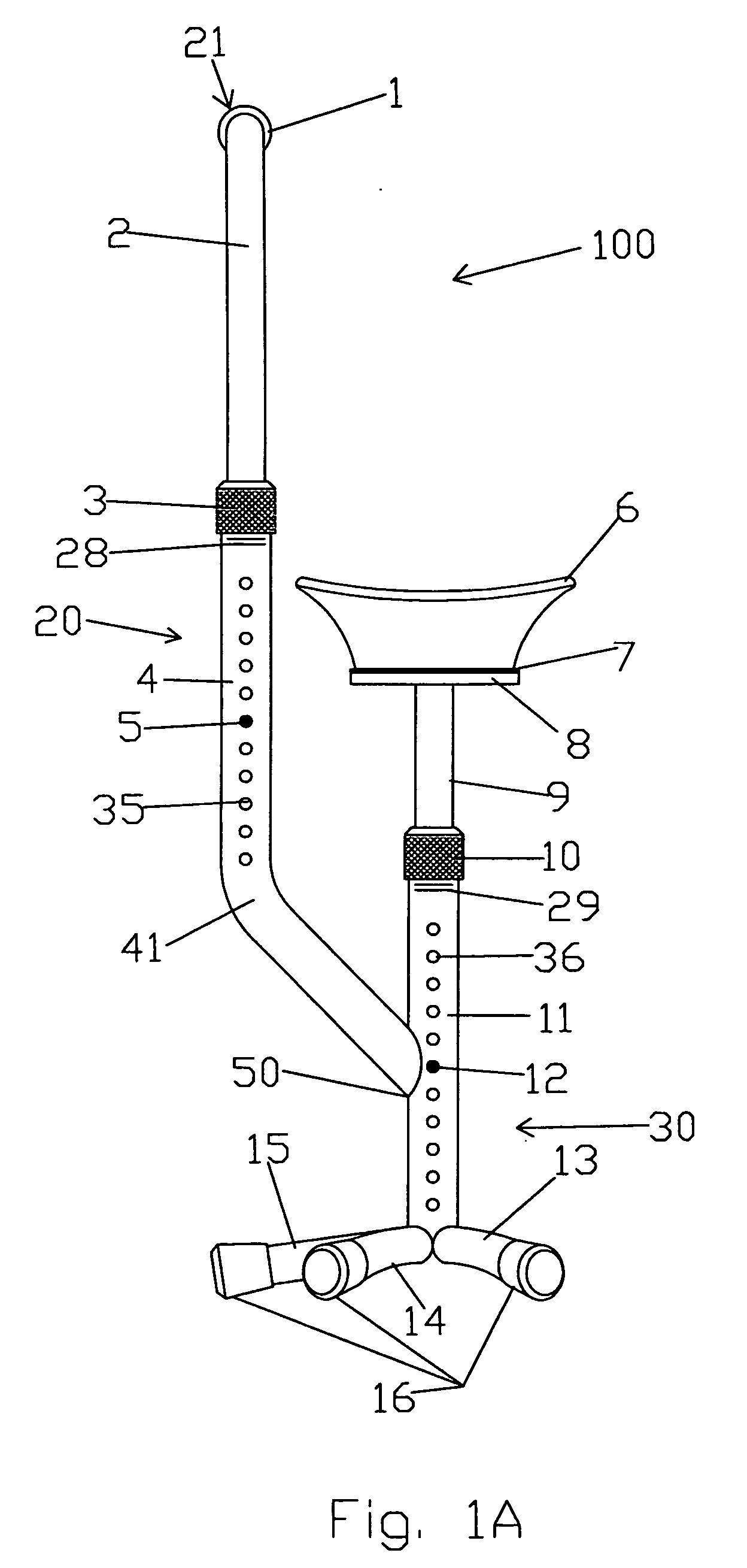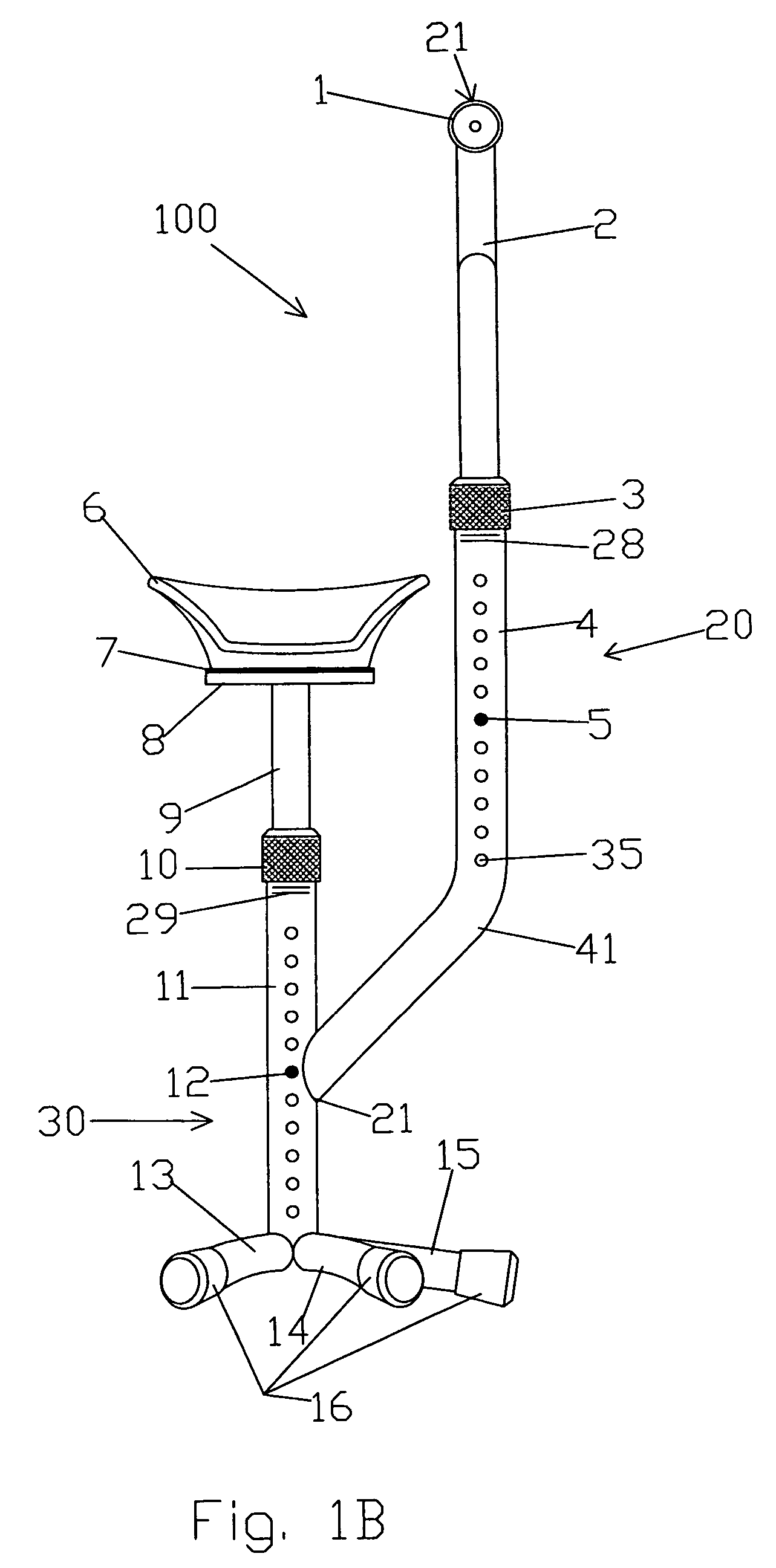Orthopedic knee crutch
a knee crutch and orthopaedic technology, applied in the field of orthopaedic knee crutches, can solve the problems of limited movement on the body, limited mobility in confined spaces, and difficulty in using crutches, and achieve the effects of reducing increasing static friction coefficients, and reducing the sliding and slipping of crutches
- Summary
- Abstract
- Description
- Claims
- Application Information
AI Technical Summary
Benefits of technology
Problems solved by technology
Method used
Image
Examples
Embodiment Construction
[0031] The present invention is ambidextrously designed, the detailed descriptions of preferred embodiments and their use are identical regardless of orientation. However, for ease in understanding the invention, the views shown in FIGS. 2A-2C, 4A-4C depict the invention configured for use with respective legs. These views when taken in conjunction with the exploded views of FIG. 6A-6C, aid the skilled artisan in appreciating the ambidextrous nature of the invention.
[0032]FIGS. 1A, 1B and 2A-2C reflect an embodiment of the invention configured for support of an injured right leg. FIGS. 3A, 3B and 4A-4C reflect an embodiment of the invention wherein the invention has been configured for support of an injured left leg.
[0033] The knee crutch 100 of the present invention includes an upper vertical riser support assembly 20 and a lower vertical riser support assembly 30. Upper vertical riser support assembly 20 includes the upper inner tubing 2 and the upper outer tubing 4. One end of ...
PUM
 Login to View More
Login to View More Abstract
Description
Claims
Application Information
 Login to View More
Login to View More - R&D
- Intellectual Property
- Life Sciences
- Materials
- Tech Scout
- Unparalleled Data Quality
- Higher Quality Content
- 60% Fewer Hallucinations
Browse by: Latest US Patents, China's latest patents, Technical Efficacy Thesaurus, Application Domain, Technology Topic, Popular Technical Reports.
© 2025 PatSnap. All rights reserved.Legal|Privacy policy|Modern Slavery Act Transparency Statement|Sitemap|About US| Contact US: help@patsnap.com



